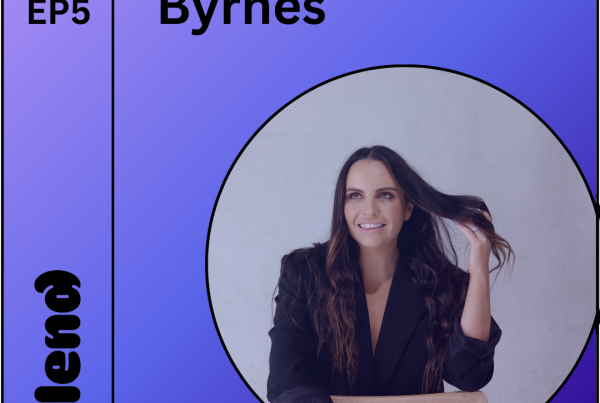
In this episode, we delve into the world of blended families with author Susanne Gervay, creator of the ‘I am Jack’ children’s book series, which offers a child’s perspective on blended family dynamics.
Susanne Gervay shares her inspiration for the book, how the books address key issues in blended families, and why there are likely so few books like these ones around.
Susanne Gervay (00:00): What is more effective is story journey. Jumping in to a story and finding yourself there. It enables them to challenge themselves. The parents challenge themselves too, but the kids know there are other ways to deal with it.
Laura Jenkins (00:20): In the Blend is a podcast series that helps parents navigate life within a blended family. Join me as I speak with experts and guests to get practical advice on how to have a harmonious blended family life. This series dives deep into the unique dynamics, logistics and challenges of raising a blended family. From new partners to juggling mixed finances, we will help guide you through it.
(00:47): Welcome back to another episode of In The Blend. Now today we have a special treat for you as we dive into the world of blended families with esteemed author Suanne Gervay, who has woven her personal experience and her passion for empowering kids and adults with story into the pages of a heartwarming book series, I’m Jack. In the books, Susanne explores the complexities, challenges, and joys of blended families through the eyes of a child. It’s a story that’s designed to help kids deal with the pressures of life after their parents divorce. It sheds light on these important themes that are relevant to so many of us in separated or blended family situations. So whether you’re part of a blended family yourself, you work with children, or you just appreciate a captivating story, this episode is for you. We’ll uncover the inspiration behind the series, its impact on the blended family narrative and Susanne’s valuable insights to help create understanding and empathy in these unique family dynamics. I loved this chat with Susanne. Let’s jump right in. Now, Susanne, you’re an order of Australia recipient. You’ve received a lifetime literacy award by the International Literacy Association, and you’re an ambassador and committee member on all sorts of literacy programs. So I am certainly in very esteemed company here. But today we’re here to talk about your four-part children’s book series. I’m Jack, can you share with our listeners what inspired you to write the I’m Jack series and how it relates to the experiences of blended families?
Susanne Gervay (02:30): Well, blended families are a complete minefield. They’re traumatic. There’s often things such as jealousy like why is that man might, mother’s partner, all those sort of things. But the thing is with really successful blended families, it’s about support guys. The stepfather, if he really links into the children, believe me, he’ll link into the mother because that’s what a mother wants. She wants a partner in life, but she also wants a father figure for her children. That does not mean he becomes the father in terms of punishment and that sort of thing. He becomes a confidant of the kids. He becomes a safe place to go to. So when I wrote Super Jack, the Father is super important because he has the boy Jack and the girl, his sister Samantha. He has their back. He’ll be there to support them, be the driver of the car when the
mother’s a bit tired and involves himself with the jokes and the humor and the culture of that family. And that’s really the key role of a blended family. And in fact, it’s often the guy who has to work a little bit harder at it than the kids.
Laura Jenkins (04:35): Yes, I can imagine that what stood out for me is that it really explores many of the challenges that blended families typically face. So knowing that the stepparent stepchild relationship is one, as you’re touching on now on how they assimilate themselves into the family, what other aspects of the challenges did you find most important to highlight in the book and why?
Susanne Gervay (05:02): In those four books, it deals with the stepfather in on every level, every level in I Am Jack the stepfather puts his hand on Jack’s shoulder as he goes into face bullying and says, do you want me to come in? And Jack says, no, I’m alright. But he knows his stepfather has his back when the mother in always Jack gets breast cancer. And of course I got breast cancer because I take from life. These books are fiction but not very fictional. They seemed to follow every drama in my life, which is the drama of all of us. I got breast cancer. It’s important for the father, the stepfather, to also understand that and how threatening it’s for the children and he’s there for them. It’s okay, but not in a corny way, not corny, just being there beside them. And similar in my last Jack book, again, the stepfather is so important and they actually marry, which is a huge and wonderful acceptance of that role within a family.
Laura Jenkins (06:44): Something that I’m curious to ask about is issues from the child’s perspective and how they might be addressed in the book as well, which is something that you just don’t see very often at all in the
literature.
Susanne Gervay (06:58): I do know when I wrote the third book in the series about when I dealt with breast cancer, but it’s any cancer, the New South Wales breast cancer, they actually endorsed it by their top doctors and they very, very rarely put their yellow daffodil on the book. And they did because they said it is one of the rare occasions that it goes inside this child’s life how they feel, where they get support. And often parents when they face whatever the crisis is, this was cancer. They’re very self-focused, but the child is on the journey too, and it brings that up so that they can understand that it’s more than them.
Laura Jenkins (08:11): And what about step siblings? Because I know in the story, the father or the stepfather brings with him a child into that blended family, Leo.
Susanne Gervay (08:24): It’s a complete crisis. It’s just terrible because Leo has ownership of one person, his dad, and he sees his dad join into another family and is loved by the two children of the mother. And so there is huge conflict. And the conflict is often secretive, secretive behind the backs of the parents where they argue and compete. And the thing is that is normal and how do you deal with that? And that’s part of the book too, to get the boy Leo to accept that he’s part of a new family. It’s very hard really, but it can work if the parents are aware of this conflict. And it’s not a conflict due to anything like their relationship or the fact they’re blending family, it’s due to human reaction. What is this strange man coming into my life?
Laura Jenkins (09:50): You mentioned the books are written for children in the eight to 12 year old age group, but listening to you speak just now, my assumption is that it likely resonates with a broader audience, including parents who would be taking something away from it, no doubt. And potentially even educators as well who are working with children. So how do you hope the book can be used as a tool for promoting understanding and empathy in blended family situations?
Susanne Gervay (10:21): Well, it’s used very widely in the education curricular, but the thing is, if readers see it only as a children’s book, they’re very, very much mistaken. It is a book which goes into their family and brings the teachers and the parents and the adults into the circle of family really, really important. And they get a lot of direction in a way, not didactic direction. That’s not my way. My way is situations. And they suddenly see, oh, why is Jack behaving like that running out or being angry? Why? And they’ll find the way to resolve these problems. It’s better that they know that it is coming and that they can solve it. They can really, really solve it.
Laura Jenkins (11:31): Let’s talk about some common misconceptions of blended families because you’ve lived one yourself and the book is inspired by your own experience. So are there any common misconceptions or stereotypes about blended families that you aim to challenge to writing the book?
Susanne Gervay (11:51): Yeah, one of the common ones is that you arrive with Leo or whoever it is, and there’s mom with her two kids, and you automatically bond, forget it. It is not going to happen. What does happen is that you nervously meet the other family, and what is the pathway to smoothing that cohesion? And there are ways, ways like all of you going on a picnic, kicking a soccer ball around, you might think, oh, what’s that mean? Well, that’s how the kids get to blend by having common experiences by the father and the mother saying, oh, that’s really great, both to all the kids. So it’s really through continual common experiences of happy times. And that is very helpful. The assumption that there won’t be jealousy is wrong. There is jealousy. I mean, imagine taking away a parent that you have ownership of and you love it’s jealousy that why is he showing the other children love and respect why it’s only me? Well, through these books, it’s an opportunity to go through the various scenarios and find your place in them, and that is the most important thing. And they will find their place. They’ll suddenly know why are they hiding those lollies? Why are they the things of kids? And you will make a blended family, you will, but only if you understand the pitfalls and work slowly towards resolving them so that it becomes a joyous occasion.
Laura Jenkins (14:17): Such good advice. I completely agree with that. And a lot of the other guests I’ve had on the show have said a similar thing in that you’ve really got to approach blended family life as a marathon and not a sprint and really work on integrating those family experiences and forging new traditions as well as potentially keeping some of the old ones that you used to used to have as well.
Susanne Gervay (14:42): My background is in child growth and development, and one of the reasons I wrote my I’M books and many others that I’ve written is because when you counsel kids, which many parents do, it’s not really that effective. What is more effective is story journey, jumping in to a story and finding yourself there. And it enables them to challenge themselves. The parents challenge themselves too, but the kids know there are other ways to deal with it.
Laura Jenkins (15:30): Oh, it’s great. It’s alternative to therapy, isn’t it? You can give them a book and they can really identify with what they’re reading and what’s going on in their life. It’s another way to get them thinking about potential solutions to problems.
Susanne Gervay (15:44): Because kids do think they’re alone. They think these problems are only mine. They haven’t got yet a sense that it’s a common problem or a common challenge. But when they go into a book and they find they’re in that book, they suddenly think, oh, I’m not alone. There are ways to address it. And it’s really lovely if a parent and child can read it together because they ask the questions that they cannot formulate normally, but when they have story, they can suddenly ask those questions that needed to be asked and then a parent can respond.
Laura Jenkins (16:39): I’m also curious to ask what other advice you might have advice for parents or even caregivers who are part of blended families and they’re looking for ways to foster an environment that’s positive and supportive for the children.
Susanne Gervay (16:56): I’m a firm believer when, especially younger children, that having that personal one-to-one time before bed is essential. You have it with your own parents, the biological one first, and it’s a time when the kids feel safe and they can talk. And the thing is, when you have that in a safe environment, don’t bring both the parents in and then have a talk. It’s very challenging. Bring the one that they’re used to, mom, they’re dad, dad, and then just chat about how things are, talk about story. And they will give you gold that you’ll know. You can act on things like, oh, why do you always take the other kids to the park? And if that’s the dad, they might say, do I, that’s wrong of me. You have to come next time. So their continual problem solving opportunities, that’s first. The second thing is when the dad or mom has the various kids in the car, it’s really a good time not to turn on the digital plethora of devices, but actually talk about what they’re all doing, resolve problems in that space where they’re enclosed, they’re trapped, and you can talk.
Laura Jenkins (18:50): They’re captive. Yes. Good advice. So coming back to the Super Jack series, have you got plans to write a fifth book?
Susanne Gervay (18:59): No. At this stage, look, I’m writing other books. I just wrote a gorgeous little book about who’s the gang on our street. It’s a narrative nonfiction, and there’s all these kids in the picture book and Cockies self for crested cockatoos, and it gives a lot of their joy and Mr the Bad rap, self crested cockatoos are getting and advice about how they can relate to kids and how we can work together. But the thing is, I’m always working on a book, the Im Jack Books, which is four books. They just work because they actually traverse my life from the first time when my son was bullied and stepdad came onto the scene, well, it was before we were married, but he comes on the scene and we see the relationship developed. And of course the first thing that happens is says, Jack, I’m the man of the house. Why is he doing that? Oh, I’m all those endless discussions. And they say it. They always present their problems in a sense, in a un way, but you could answer in Super Jack, they’re going off up north having a good time.
(20:54): It’s really great. Several things. One to joke and often joke about the mother is very irritating, but everyone loves a joke about the mom and she obviously takes it in her stride because moms do really, really excellent things like take the children to the supermarket and call out to one of the kids, Hey, I
found the underpants. The kids nearly, they think it’s so funny. And they said, yes, mom is so embarrassing. And then the dad said, yes, she’s no, I’m not just the normal daily interactions of our lives. We just need in blended families to be a little bit extra aware.
Laura Jenkins (21:56): Something I’m curious to ask is whether or why rather you think there hasn’t ever been that much written before about blended families in particular in the children genre, when we see a lot of books about the nuclear family structure. Do you think there’s a reason why there isn’t more out there?
Susanne Gervay (22:22): Look, I actually agree with you. Blended families are really the norm, at least, I don’t know, 50% of it or whatever. A lot of blended families occur and we should be writing more about it. But for many people, they don’t even know how to approach it. For example, when I write my books, it’s always from a kid’s point of view in that situation and how they will react. And sometimes they react really annoyingly. They will not talk to dad or not talk to mom is the other side, or they react very intuitively and emotionally. And I think for many, they don’t really understand. You have to write truth because when a kid behaves like they do, they have to know it’s true and they find ways to resolve it. I dunno why more people don’t write about blended families. Sadly, I think it’s not topical, even though so many of our kids are in blended families. And it’s tough at times. It’s not topical, it’s not a single parent family, which there are endless books on. It’s not a nuclear family, which there’s endless books on. There’s not a family with a grandparent only. This just becomes not fashionable. But the point is when kids are living in a blended family, they have an extra layer of conflict and adjustment they need to address.
Laura Jenkins (24:35): Well, I’m so glad you have helped them address that, Susanne, with your books. And just lastly, where can listeners go to get their hands on a copy of either one or all four of the books in the series?
Susanne Gervay (24:48): They’re online everywhere. It’s published by Harper Collins. And so if the books are not in the shop at this moment or whatever, you can go online and get it anywhere. They’re just available really. But yeah, and the shops as well. And of course I do support independent bookshops, but they can’t have every book at every moment.
Laura Jenkins (25:24): Yes. Excellent. Well, we’ll make sure we’ve got a link available in the show notes. Thank you. Just lastly, Susanne, is there any last words of advice for those listening who are finding themselves in the thick of a blended family situation with all the various challenges and conflicts that arise?
Susanne Gervay (25:45): Well, I have some advice. Make sure you get some time out. It’s time for a babysitter to come in or the grandma come in and get some new time with each other because sometimes the stresses and blending and the conflicts and the joys get overwhelming. My advice is get some me time so that you can refresh your commitment to each other, talk about some of the issues you want to fix, and have a very positive experience in this great family because when it’s can be more joy than just a nuclear family because there’s more of the kids to share. And it can be such, I’ve seen blended families where the kids are best friends from one family and the other really positive. But last advice, again, the adults need time out.
Laura Jenkins (27:13): Very wise words. Thank you so much. I completely agree with that. And speaking of which, I’m going to make sure we’ve got some of that blocked out in the calendar. But Susanne, thank you so much for your time. It’s just been a joy speaking with you.
Susanne Gervay (27:30): And a joy speaking to you.
Laura Jenkins (27:32): Thanks for listening to In The Blend podcast. The show notes for this episode are available @intheblend.com au. And if you like what you heard, be sure to subscribe and please rate and review in your podcasting app. You can also follow me on Facebook, Instagram, and LinkedIn.





